Used car prices have recently dropped, offering some welcome news to buyers. However, despite this positive trend, interest rates remain elevated.
The Federal Reserve is scheduled to meet in mid-September. While there’s a possibility of an interest rate cut, any reduction will take time to influence borrowing costs for auto loans.
In light of ongoing economic uncertainty, many consumers are prioritizing value when it comes to purchasing vehicles. For a growing number of people, that means steering clear of new cars — either due to budget constraints or a desire to stretch their money further.
10 Best Used Cars
If you’re searching for a reliable vehicle without buying new. The organization recently released a list of the best used cars available, focusing on those offering the greatest remaining lifespan at the most affordable cost per 10,000 miles.
1. Chevy Trax
Ranked as the top five-year-old used car in terms of value, the Chevy Trax has an average price of $17,274 and a cost of $1,442 per 10,000 miles. This subcompact SUV made its U.S. debut in 2015.
If you’re able to find a 2019 model, you could potentially get another 120,000 miles from it — equating to about 65% of its overall expected lifespan. The Trax also topped iSeeCars’ rankings of the best-value five-year-old SUVs.
The Chevrolet Trax is equipped with a modest powertrain, featuring a 137-hp turbocharged 1.2-liter inline-three-cylinder engine, a six-speed automatic transmission, and front-wheel drive.
Notably, all-wheel drive isn’t even available as an option. Around town, the Trax offers enough initial power to avoid feeling underpowered, but its limitations become apparent during highway merges or when trying to overtake other vehicles.
Still, its six-speed automatic transmission is a highlight — it operates smoothly and avoids the droning noise commonly associated with the continuously variable transmissions (CVTs) found in rivals like the Honda HR-V and Subaru Crosstrek.

In terms of dynamics, the Trax delivers a carlike driving experience and feels more nimble than many others in the segment. The brake pedal is firm and confidence-inspiring, while the steering offers decent feedback and predictability — impressive for a vehicle designed with basic transportation in mind.
In performance testing, the Trax reached 60 mph in 8.8 seconds. While that’s slower than some of its competitors, it’s still within the acceptable range for the subcompact SUV segment, where performance standards tend to be modest.
The 2025 Chevy Trax also holds its own when it comes to fuel economy. It achieves 28 mpg in the city and 32 mpg on the highway. Those numbers are comparable to the nonturbo Mazda CX-30 — despite the CX-30 offering all-wheel drive, while the Trax is front-wheel-drive only. Notably, the Trax also beats the Hyundai Kona in city fuel economy.
Also Read: 10 Ford’s Best V8 Engines Ranked by Real-World Longevity and Proven Reliability
2. Honda Fit
Another standout choice for used car shoppers is the Honda Fit — particularly for those who prioritize affordability. A five-year-old Fit typically costs around $19,049 and comes with a cost per 10,000 miles of $1,473. It’s projected to deliver about 129,000 miles of remaining life, or roughly 68% of its total lifespan.
Although Honda discontinued the Fit in 2020 due to declining demand, it remains an excellent option for those in search of a compact, fuel-efficient ride.
The Honda Fit has played a major role in defining the subcompact hatchback segment, and even after a 13-year run over two generations, it remains a top contender in its class.
While the U.S. market has not received the latest generation of the Fit — and likely won’t — the second-generation model, available since 2015, continues to impress. Across all four trim levels, the Fit is powered by a 1.5-liter four-cylinder engine, producing between 128 and 130 horsepower depending on the transmission — either a six-speed manual or a CVT automatic.
This charismatic Japanese hatchback continues to deliver generous cabin space, strong fuel efficiency, and high safety ratings. Can it still hold its own against rivals like the Toyota Yaris or Kia Rio? It certainly appears to be more than capable.
A textbook example of cost-effective practicality, the base LX trim of the 2020 Honda Fit starts at an MSRP of $16,190 when paired with the manual transmission.
Opting for the CVT increases that price to $16,990. The Fit Sport model with a manual transmission comes in at $17,600, while choosing the CVT on this trim adds an $800 premium.
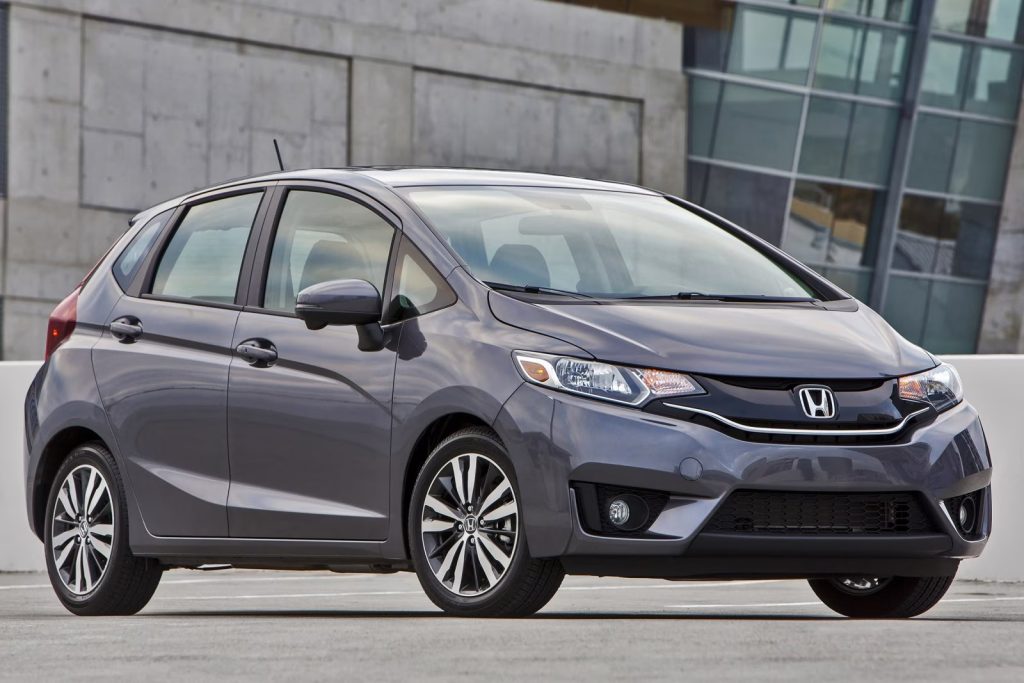
The EX trim includes the CVT as standard and starts at $19,060, while the EX-L, which tops the range, begins at $20,620. These prices do not include tax, registration, licensing fees, or the $955 destination charge.
When it comes to the driving experience, the Honda Fit may not be a performance powerhouse, but it offers solid ride comfort, composed handling, and a generally pleasant feel inside the cabin.
Mechanical noise is minimal, though the CVT does introduce a noticeable droning sound that detracts from the overall refinement. Its compact dimensions and short wheelbase contribute to its agile nature, helping it absorb road imperfections effortlessly.
For a front-wheel-drive vehicle, the Fit offers impressive grip, although some body roll may be felt during aggressive cornering. Enthusiasts may want to consider the optional Honda Factory Performance Package, which enhances both ride comfort and driving dynamics with a more sport-oriented suspension setup.
Steering feel isn’t the Fit’s strong suit, due to the electric power steering system, which lacks feedback. However, the steering is well-weighted and responsive enough to make daily driving a breeze. All in all, the Fit provides an enjoyable driving experience, even if it doesn’t quite match the sporty feel of earlier generations.
It might not win beauty contests in the U.S. market, but the Honda Fit stands out where it counts. It offers best-in-class interior space, solid reliability, and impressive value across all trim levels. The combination of affordability, ride quality, advanced safety features, and practicality makes it an unbeatable package.
Despite its somewhat boxy appearance and a powertrain that can feel underwhelming at highway speeds, the Fit continues to lead its class in many key areas. After 13 years and two generations, the 2020 model proves that the Honda Fit remains one of the smartest buys in the segment — just as relevant now as it was when it debuted in 2008.
Also Read: 6 Reliable City Cars and 6 That Aren’t Made for Stop-and-Go
3. Honda Insight
The dependable Honda Insight, which shares a platform with the Honda Civic, is praised for its overall value. The average cost per 10,000 miles for a five-year-old model is $1,485. You can expect it to offer more than 148,885 miles in total, which accounts for approximately 68.8% of its full lifespan.
While the Honda Insight was originally introduced in 1999, it ended production in 2022 and has since been replaced by the Honda Civic Hybrid. As such, you won’t find new versions at dealerships, but used models still provide strong value.
Being eco-friendly is becoming easier, more affordable, and more stylish each year, and the Honda Insight is a perfect reflection of that evolution. Based on the sleek Honda Civic, this compact sedan distances itself from the awkward or overly futuristic designs that often characterize hybrid vehicles.
Even three years after its major redesign in 2019, the Insight still feels current, and the powertrain remains unchanged—which isn’t a drawback. With a combined 151.5 horsepower from its gas engine and electric motors, the Insight offers nimble, confident handling that gives it far more personality than the clunky Toyota Prius.
Its traditional styling, generous interior and cargo space, and a robust suite of safety features via the Honda Sensing package make it a strong contender for anyone looking for a hybrid that doesn’t scream “eco-warrior.”
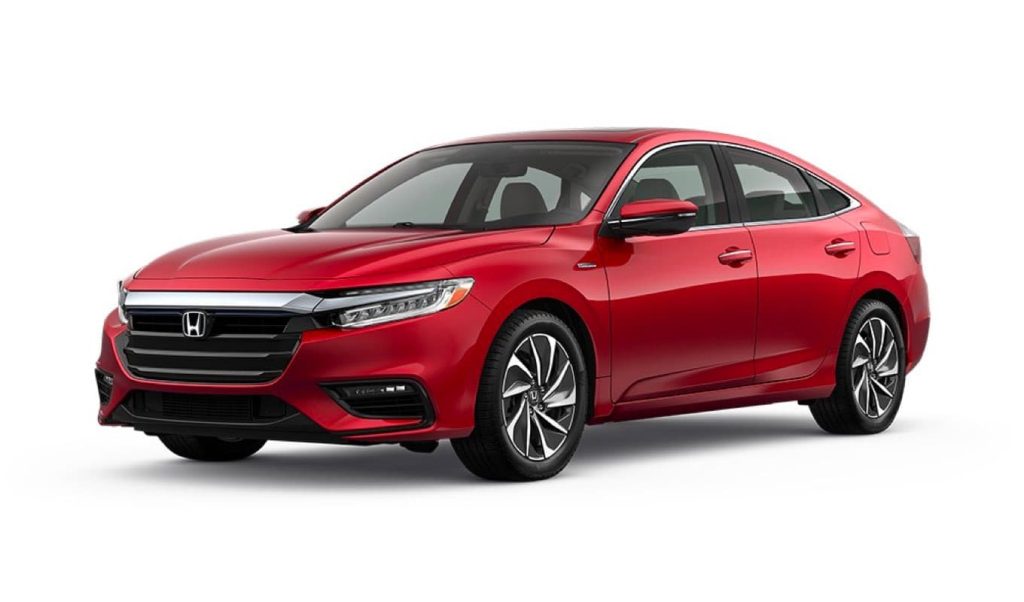
The 2022 Honda Insight also maintains its position as a relatively affordable hybrid, despite the discontinuation of the base LX trim. The EX trim starts at $25,210, while the Touring trim bumps that up by $4,030 to $29,240.
These prices exclude tax, registration, licensing, and a $1,015 destination charge—which is $60 higher than last year’s fee. Still, even with those extras, the Insight remains competitively priced for a well-rounded hybrid sedan.
From behind the wheel, the Insight doesn’t behave like a typical hybrid. It delivers precise, responsive steering, and thanks to its Civic DNA, it’s more enjoyable to drive than most in its class. While it wouldn’t be called sporty, it certainly doesn’t feel dull.
You can toggle between several drive modes—Normal, Sport, Econ, and EV—each offering a different experience. Econ mode provides the best fuel economy but significantly reduces performance, making the car feel underpowered. EV mode is largely impractical, offering only about a mile of electric-only driving. For most situations, Normal mode is the ideal balance.
However, when you’re looking to inject a little fun into your commute, Sport mode wakes things up with sharper steering and quicker throttle response. Altogether, the Insight offers a comfortable, engaging, and practical drive that doesn’t compromise efficiency for personality.
4. Buick Encore
The Buick Encore, a subcompact SUV, earns recognition on both the five-year-old and 10-year-old best vehicle lists.
A five-year-old model comes with a cost of $1,492 per 10,000 miles, and it’s reasonable to expect nearly 125,000 miles of use from it. For those considering an older option, the 10-year-old model still offers solid value — delivering more than 82,471 miles on average for a price of $12,784, which is a respectable deal.
In 2024, the Buick Encore GX underwent a design refresh, which included a new interpretation of Buick’s iconic tri-shield logo, along with updates to its lighting elements, wheel designs, and bumpers.
For the 2025 model, the automaker made some further adjustments, including modifying the 1.2-liter turbocharged engine to be compatible with E85 fuel. Aesthetic changes are minimal, with the addition of a new, attractive Aquamarine Blue Metallic paint option and shiny chrome lug nuts.
Pricing for the 2025 Buick Encore GX starts at $27,395 and ranges up to $32,895, depending on the trim and additional options. The available trims include the base Preferred model at $27,395, the recommended Sport Touring at $28,595, and the higher-end Avenir at $32,895.
While the Encore GX doesn’t quite match up to luxury competitors like the BMW X1 or the Mercedes-Benz GLA250, it holds its own against more mainstream rivals, including the Honda HR-V and Toyota Corolla Cross.
With solid features and good value, the Encore GX stands out in its segment. For the best balance of style and affordability, we recommend opting for the mid-range Sport Touring trim.
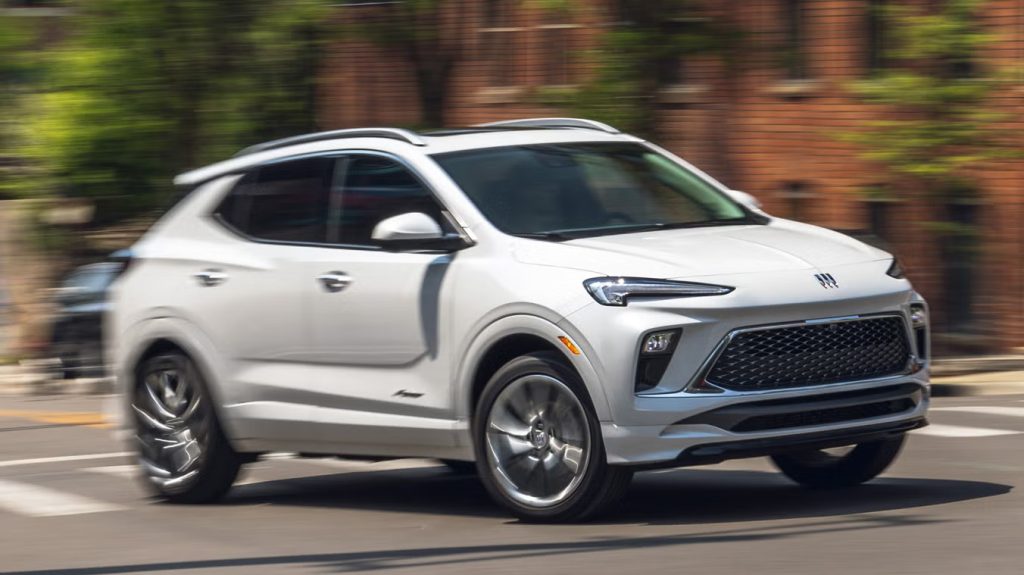
Under the hood, the Encore GX offers two turbocharged three-cylinder engine options. The base 1.2-liter engine produces 137 horsepower, while the optional 1.3-liter engine bumps the output to 155 horsepower.
Front-wheel-drive models come standard with a continuously variable transmission (CVT), while all-wheel-drive versions are equipped with a nine-speed automatic. The Buick provides a smooth and controlled ride, though it doesn’t deliver any thrilling handling.
In terms of acceleration, an AWD Encore GX Avenir with the larger 1.3-liter engine reaches 60 mph in 8.8 seconds. This is about average for mainstream competitors, though some luxury-brand rivals offer more powerful engines and faster acceleration.
Despite this, the Encore GX feels peppy around town, with the small turbocharged engine making good use of its low-end torque for a zippier experience in everyday driving.
5. Mitsubishi Outlander Sport
A compact SUV, the Mitsubishi Outlander Sport stands out as one of just two vehicles in this group with an average price below $18,000 for a five-year-old version. It carries a cost of $1,498 per 10,000 miles.
You can anticipate getting close to 115,000 miles from this model — a range that could easily cover plenty of road trips down the line. In fact, it just might be the ride that takes your tween to move into their first college dorm.
Upgrading to the LE trim level adds several features that help make the Mitsubishi Outlander Sport feel more contemporary. Among the most notable upgrades is the 8.0-inch touchscreen, which includes Apple CarPlay and Android Auto compatibility.
Other enhancements with this trim include black exterior accents, a leather-wrapped steering wheel, and red stitching on the seats, giving the interior a more refined touch.
When it comes to performance, the Outlander Sport offers a choice between two powertrain options, each with its own trade-offs. The base 148-hp 2.0-liter four-cylinder engine is notably sluggish, offering minimal acceleration.
On the other hand, the more powerful 168-hp 2.4-liter engine provides quicker acceleration, but at the cost of lower fuel economy. The 2.4-liter engine is only available on the higher-priced top-of-the-line SEL model.
Both engines are paired with a continuously variable automatic transmission (CVT), which is unrefined and detracts from the driving experience. While the Outlander Sport is not a sporty vehicle, it gets the job done by transporting you from point A to point B with minimal fuss.
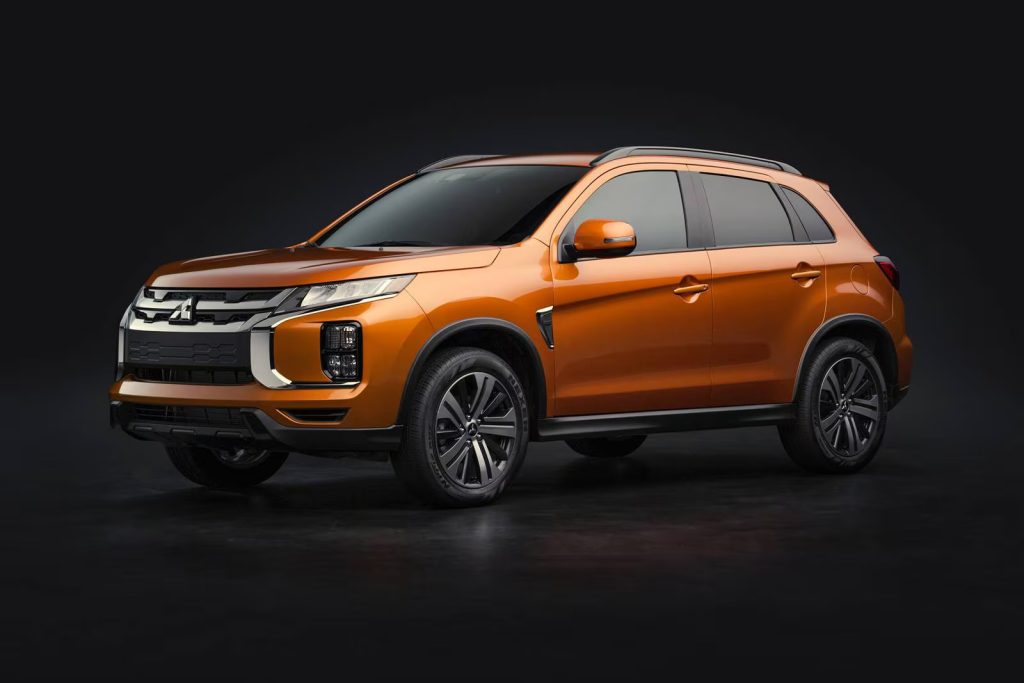
The vehicle exhibits noticeable body roll during cornering, but it remains stable and doesn’t feel overly tippy. Its braking performance is average for its class, with the brake pedal feeling initially soft but firming up to provide responsive stopping power.
In terms of acceleration, a 2.4-liter Outlander Sport tested previously reached 60 mph in 8.0 seconds, which actually outperforms several of its top competitors.
Fuel economy ratings for the Outlander Sport fall behind its more modern rivals. The 2.0-liter engine is rated at 23 mpg in the city and 29 mpg on the highway, while the 2.4-liter engine has slightly lower estimates of 23 mpg city and 28 mpg highway.
We tested an all-wheel-drive Outlander Sport with the larger engine on our 75-mph highway fuel-economy route as part of our standard testing procedure, and it returned 25 mpg.
Used Cars That Are A Waste of Time
If you’re shopping for a used car to save some serious money, that’s a smart move — but it’s equally important to know which vehicles to stay far away from.
Credit card debt can feel like a constant burden. It looms over every financial decision, draining you emotionally and even physically. Despite making consistent payments, the high interest rates often make it feel like you’re getting nowhere.
1. 2015 Ford Fiesta
The 2015 Ford Fiesta may appear to be a dependable small sedan, but its reputation is marred by mechanical issues that make it a risky choice for used car buyers. While it can perform well under the right conditions, this particular model year is notorious for problems with transmission mounts and frequently requires strut replacements.
These types of repairs can become both costly and frustrating over time, draining your budget and patience. Since a car’s true value lies in its reliability, the 2015 Fiesta doesn’t offer the long-term peace of mind most buyers are looking for.
The 2015 Ford Fiesta stands out in the subcompact car category, ranking in the top third due to its excellent handling and stylish, upscale interior.
However, it does have its drawbacks, including a clunky automatic transmission, cramped rear seats, and below-average safety and reliability ratings. Despite these issues, it remains a fun-to-drive car with above-average fuel economy.
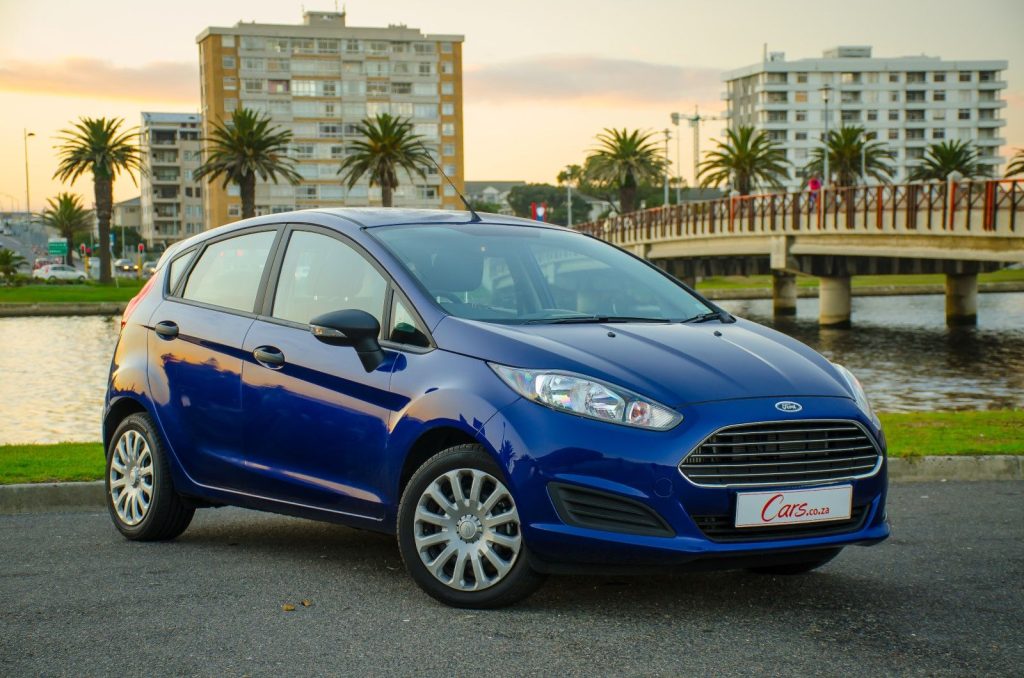
The Fiesta’s interior is particularly attractive, made with premium materials, and it offers a rewarding driving experience. However, the automatic transmission can feel unrefined and jerky, which detracts from the overall experience.
The rear seat space is tight, and cargo space is limited, making it less practical compared to some rivals. While the Fiesta does offer good driving dynamics and a quality cabin, its reliability and crash safety ratings are concerning.
Despite these shortcomings, it holds a solid place in the subcompact market, though there are better options available, such as the 2015 Honda Fit and 2015 Chevrolet Sonic. The 2015 Ford Fiesta is a solid choice but may not be the best in its class, especially for those prioritizing rear passenger comfort, cargo space, and reliability.
2. 2020 Nissan 370Z
The 2020 Nissan 370Z is another used vehicle to approach with caution. Although it boasts the bold styling of a sporty coupe, its interior and features don’t justify the price.
The car lacks a solid infotainment system — a major drawback for modern buyers — and it falls short when it comes to safety technology. Given what you might pay for it, the absence of these expected features makes it a tough sell compared to other cars from the same year that come better equipped.
The 2020 Nissan 370Z may not be the best choice if you’re in the market for a used sports car. While it offers decent performance, it falls short in several areas.
The interior is poorly designed, with features and styling that feel outdated, resembling the mid-2000s, and not in a positive way. The seats, while supportive, are uncomfortable for longer drives, and the cabin allows an excessive amount of road and wind noise to enter, detracting from the overall experience.
In terms of performance, the 370Z doesn’t compare favorably to modern sports car rivals like the 2020 Mazda Miata, Toyota 86, and Subaru BRZ. These competitors not only outperform the 370Z in terms of driving dynamics but are typically more affordable as well.
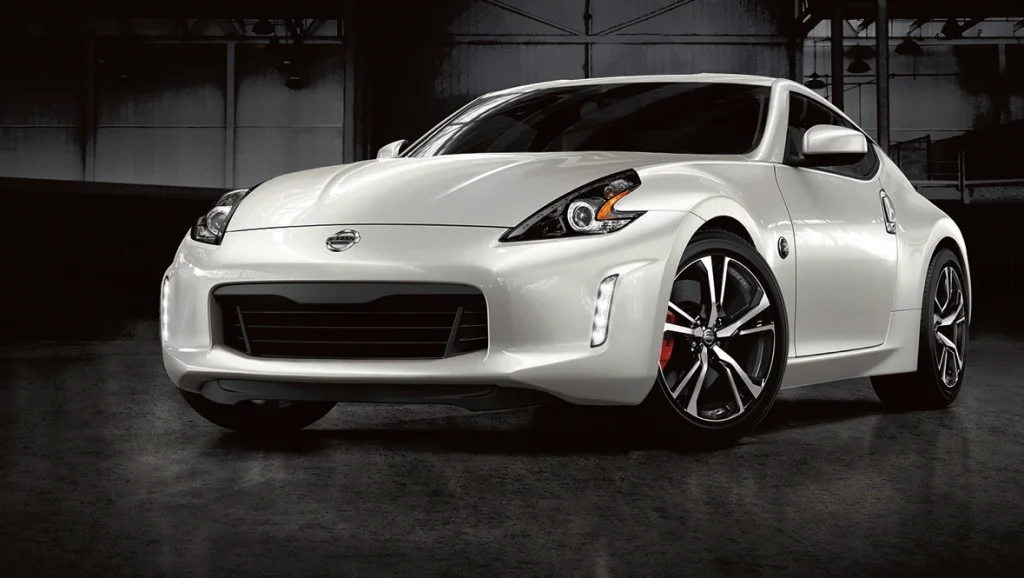
In addition to its performance shortcomings, the 370Z’s pricing is worth considering. The average list price for the 2020 Nissan 370Z is $23,075, with prices ranging from $23,075 to $35,768, depending on factors such as the vehicle’s condition, mileage, features, and location.
However, owning a 370Z comes with a higher-than-average cost. Over five years, the expected costs for gas, insurance, taxes, fees, repairs, and maintenance are projected to be about $36,300, or $7,260 per year.
For 2020, Nissan made a few changes, most notably discontinuing the convertible (roadster) body style and offering only the coupe version.
Additionally, they introduced a special 50th Anniversary Edition with retro two-tone graphics. Other than these updates, there are no significant differences between the 2020 model and the 2019 version of the 370Z.
3. 2008 and 2010-12 Chrysler Town & Country
If you’re considering a minivan, it might be tempting to go with a Chrysler Town & Country, but it’s wise to look at alternative models first. Specifically, the 2008 and 2010–2012 versions are ones to steer clear of.
These model years have a reputation for poor reliability, with frequent issues related to their electrical systems. That kind of inconsistency can make ownership stressful and expensive in the long run.
The 2008 Chrysler Town & Country received a full redesign, showcasing a more angular and modern exterior, along with numerous new features inside.
This model year introduced Chrysler’s innovative Swivel ‘n Go seating, which enabled the second-row seats to rotate 180 degrees to face the third row, creating a mobile living room. Additionally, an optional removable table further enhanced this flexible seating arrangement.
Chrysler also made significant changes under the hood, making a 4.0-liter V6 the standard engine for the top-tier Limited trim. The brand introduced new entertainment options as well, such as dual rear DVD screens and Sirius Backseat TV, which allowed family-friendly channels to be broadcast directly to rear-seat passengers.
Inside, the dashboard design is straightforward and functional, with easily accessible controls and an optional touch-screen infotainment system available on higher trims.
Chrysler made notable improvements in passenger comfort and entertainment, offering options like a dual-screen rear entertainment system, a power-folding third row, and ambient lighting that created a more pleasant atmosphere for passengers.
Higher trims, such as the Touring and Limited, enhanced the interior experience with premium features like power-sliding doors, a power liftgate, and heated seats for both the first and second rows.
With innovative storage solutions and an available navigation system, the Town & Country balanced practicality with luxury. The 2008 Chrysler Town & Country also excels in space, comfortably accommodating up to seven passengers.
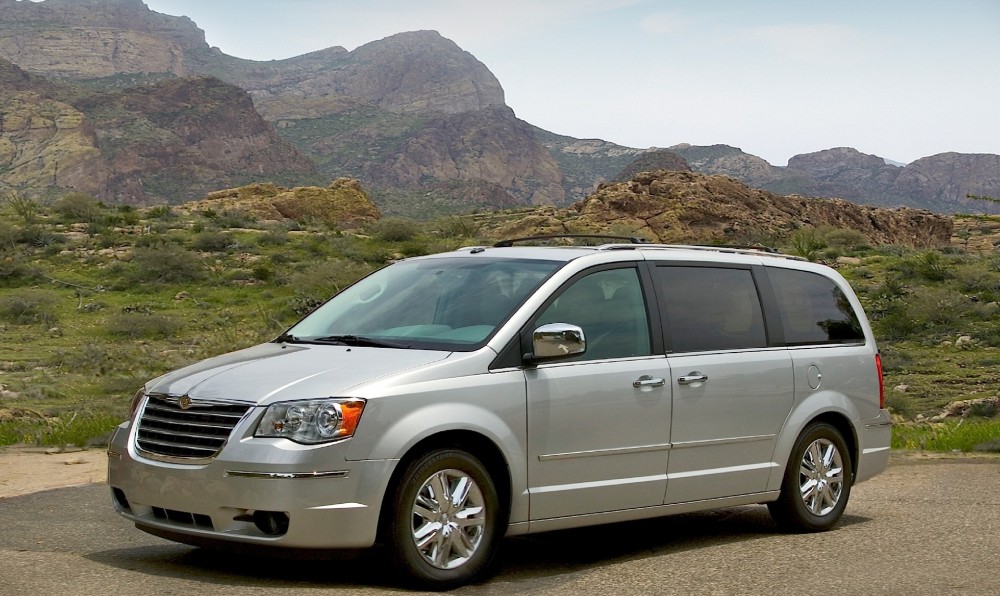
The front-row seats are spacious and provide excellent visibility, while the second-row captain’s chairs offer generous legroom and, when equipped with the Swivel ‘n Go system, can rotate to face the third row. The third-row bench, although better suited for smaller passengers, remains usable for occasional adult seating.
Cargo space in the Town & Country is another standout feature. Even with all seats in place, the van provides a respectable amount of storage in the rear.
By folding the third-row seats flat into the floor, the cargo capacity increases significantly, and the Stow ‘n Go seating in the second row transforms the cabin into a cavernous space capable of carrying large items.
4. 2020 Toyota Land Cruiser
When it comes to the 2020 Toyota Land Cruiser, fuel efficiency is the main concern. If your goal is to save on gas, this SUV might not be the best fit. Compared to similar models, the Land Cruiser falls short — delivering just 13 miles per gallon in the city and 17 on the highway.
That’s significantly lower than a 2020 Ford Explorer, which offers 18 mpg in the city and 24 on the highway, or a Chevrolet Blazer, which gets 18 and 25 respectively. When shopping, those differences add up.
The 2020 Toyota Land Cruiser stands out for its remarkable off-road capabilities, making it an excellent choice for those who need a vehicle that can handle challenging terrain. This large, truck-based SUV is built for serious off-roading, featuring a locking center differential and the ability to tow over 8,000 pounds.
Unlike many competitors in the luxury three-row SUV segment, which use car-based platforms that prioritize comfort and fuel economy, the Land Cruiser’s body-on-frame construction allows it to excel in off-road performance, going further off the beaten path than most other vehicles in its class. However, this rugged design comes with notable downsides when it comes to on-road driving.
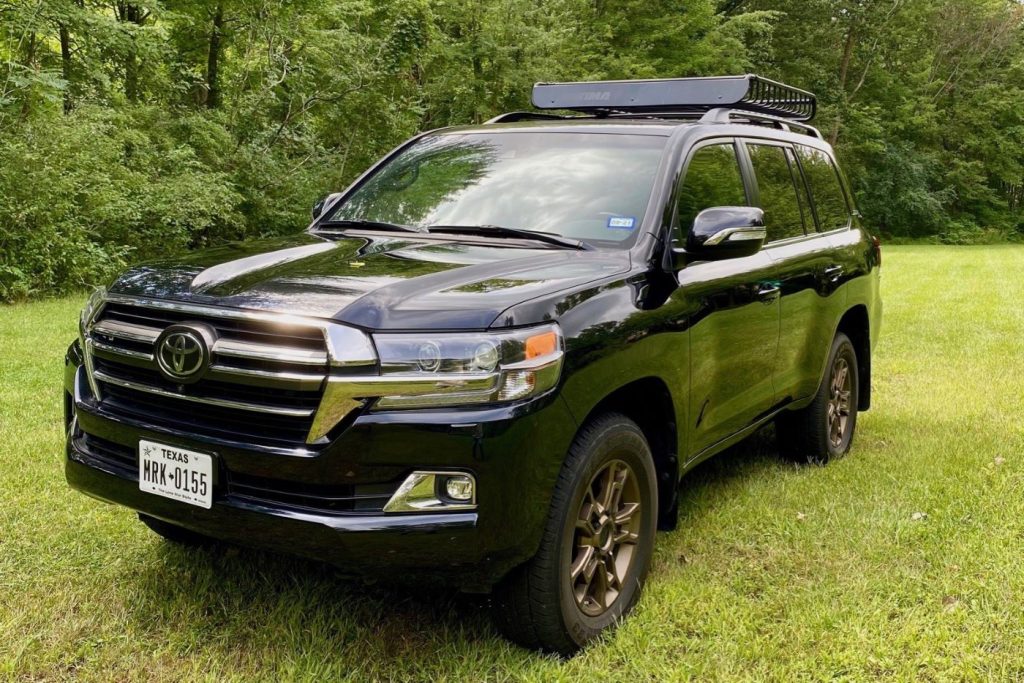
The Land Cruiser’s large size affects its braking, steering, and handling, making it less agile and harder to maneuver smoothly on highways and city roads. Additionally, despite its overall size, the Land Cruiser has limited rear cargo space compared to its rivals, and the third-row seats are cramped, making them uncomfortable for adults.
Toyota also offers a two-row version of the Land Cruiser, called the Heritage Edition, which adds upgraded wheels and extra exterior trim. While this model offers fewer seats, it is priced higher than the base model.
For those interested in a luxury SUV, the 2020 Land Cruiser might not be the best option. While it delivers outstanding off-road performance, it lacks the modern features, luxury, and refinement found in many of its competitors, such as the Audi Q7, Land Rover Discovery, or Lincoln Aviator.
The Land Cruiser’s dated design and lack of advanced features make it less competitive in terms of comfort, technology, and overall driving experience compared to more modern alternatives.
Therefore, while the Land Cruiser is a great choice for off-roading enthusiasts, it falls short in other areas, and buyers may want to consider other vehicles that offer a better balance of luxury, performance, and features.
5. 2011–2014 Hyundai Sonata
Another vehicle to be wary of is the 2011–2014 Hyundai Sonata. These models are plagued by engine issues, particularly with the 2.0- and 2.4-liter Theta II engines.
In fact, the problems were so widespread that a class action lawsuit was filed against Hyundai, which later settled and agreed to reimburse owners for certain repairs. If you’re seriously considering this model, make sure to review its maintenance history closely and check for any signs of engine trouble before making a decision.
The sixth generation of the Hyundai Sonata marked a significant milestone in the model’s history, as it became the first Sonata to be sold under different nameplates in the U.S. and Europe.
Despite the ongoing global financial crisis affecting the automotive industry, Hyundai chose to accelerate its research and development efforts, unveiling the sixth generation of the Sonata in Korea. In 2010, the model was introduced to the U.S. as the 2011 Sonata and to other markets as the i45.
The automaker’s design team developed a new design language for the entire lineup, named “fluidic sculpture,” and the sixth-generation Sonata followed these principles. This generation was built on a new platform and offered both gasoline and hybrid powertrains.
The 2011 Sonata featured organic-shaped headlights that swept back along the sides, with sharp angles towards the car’s center, and included daytime running lights for added visual appeal.
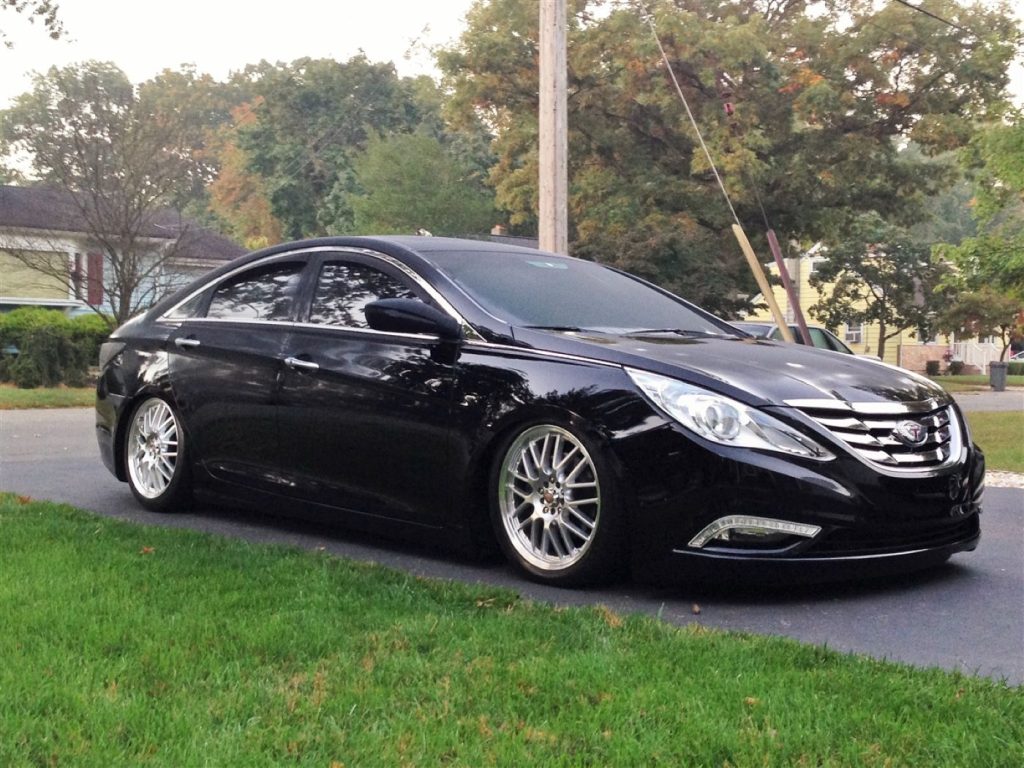
The grille was designed with chromed horizontal slats, placing the brand’s badge prominently in the center. Below the grille, the bumper featured an A-shaped air intake, with scoops for the fog lamps on either side.
The Sonata had come a long way from being a less competitive choice among mid-size sedans, emerging as a solid alternative to popular models like the Honda Accord and Toyota Camry in the U.S. However, it wasn’t until the sixth generation that the Sonata’s styling truly stood out.
The design improvements included additional chrome detailing along the vehicle’s sides, such as a trim that extended from the headlights to the D-pillars. Sculpted door panels added a dynamic and modern look to the vehicle, while the sloped roofline and cab-rearward design gave the Sonata a more upscale and refined appearance.

